To marry and adopt a village
“Once you adopt someone, there are closer ties between you, you are getting more concerned about a person, regarding him/her as your next of kin. And it’s much the same with the villages, says Armine Hakobyan.
Len Wicks, an initiator of the ‘Adopt a Village’ program, is Armine Hakobyan’s husband. They’ve been implementing the program, linking the Armenian communities with the Diaspora communities abroad, for 1 year already.
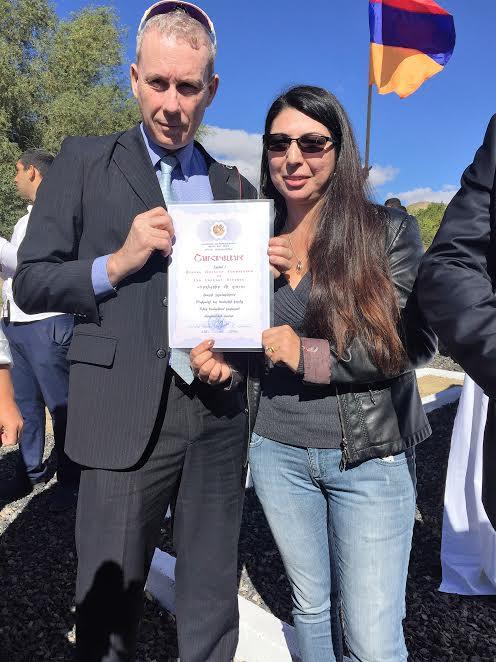
Len Wicks, a resident of Australia and New Zealand, married an Armenian woman, Armine Hakobyan, five years ago. It was then that he discovered the Armenian highland and grew fond of the villages scattered around it, as well as the people living there, the nature and the historical monuments of this country.
“This nation has great potential. I think, Armenia can become one of the world’s tourist centers. As far as I could see, Armenians are very industrious people. I believe, the local youth have great future, but that requires certain changes. This could be achieved through cooperation with the Armenian Diaspora. The latter possesses great potential to ensure Armenia’s development, says Len Wicks.
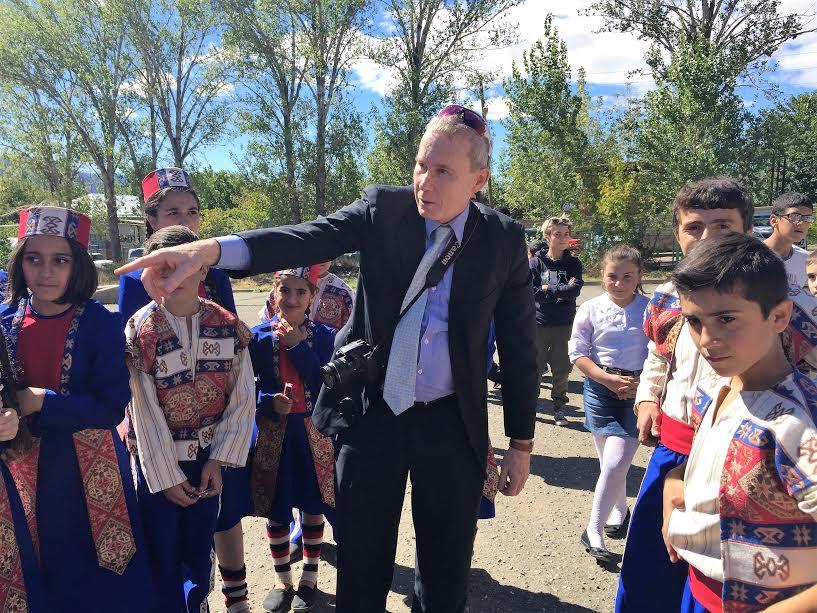
“This program involves micro-projects, carried out thank to the Armenian communities of Thailand, New Zealand and Australia. So, we are thus trying to contribute to the development of Armenian villages. Having married Armine, I took a treasure from Armenia, and now I realize that it’s my turn to do something for this wonderful country, he explains.
The ‘Adopt a Village’ program has been carried out in Vayots Dzor province, South Armenia, involving Areni, Rind and Shatin villages.

A composition entitled ‘Karas’ [translated as ‘a jar’] has been mounted at a road junction leading to Rind and Chiva communities. It consists of a number of clay vessels of different size, interwoven with each other to form a grapevine.
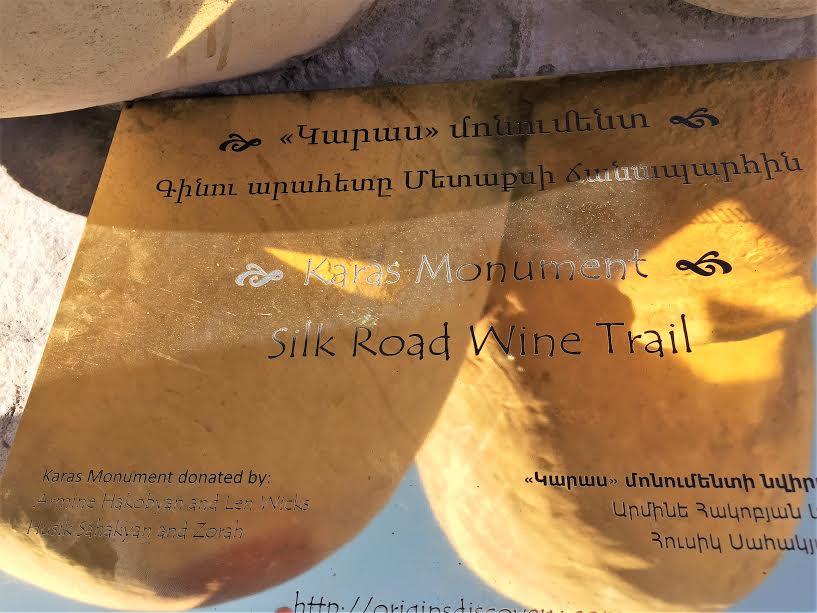
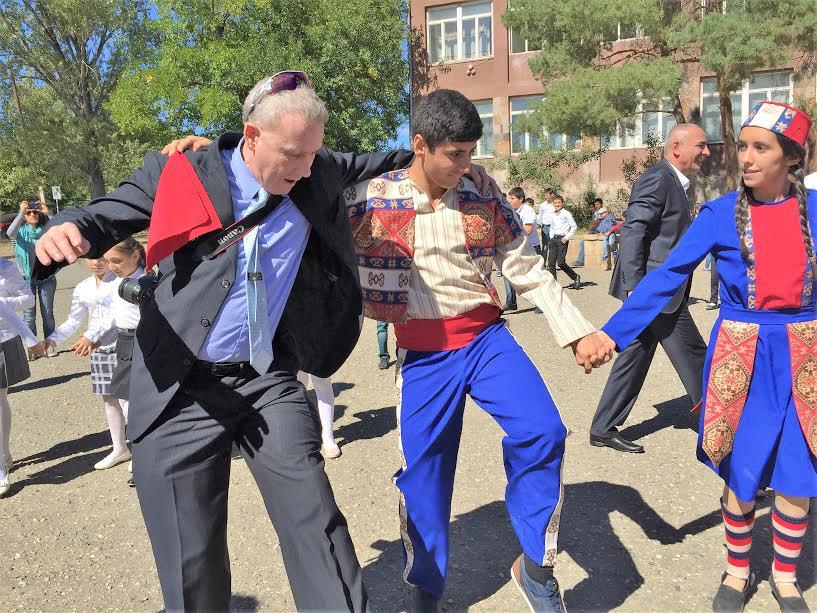
“This sculpture has a single meaning-it’s a wine path of the Great Silk Road. It symbolizes an ancient culture of winemaking in Armenia and it will bring here many tourists, says Len Wicks.
A playground for the kindergarten has been constructed through the program funds in Rind, a village with the population of 1,700 people, which is bordering Nakhijevan. 40 children attend this kindergarten.
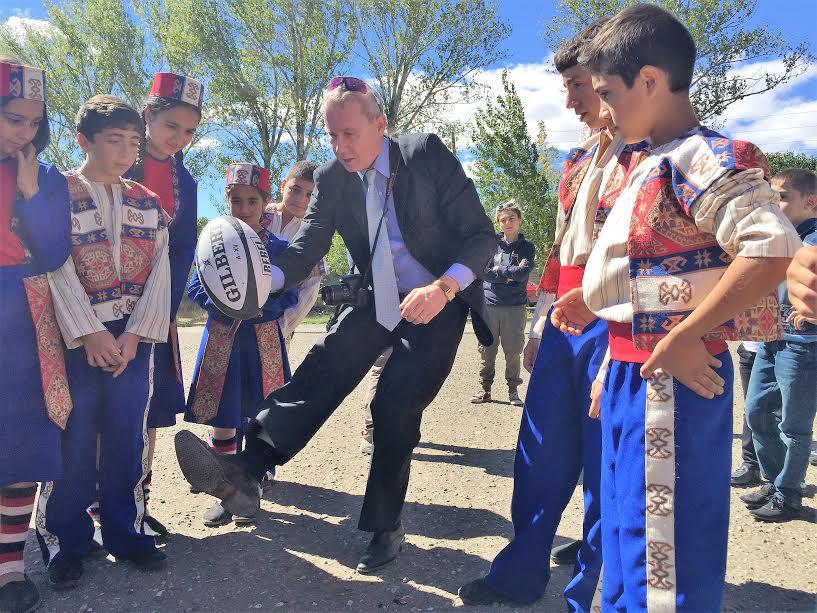
Rind means ‘a yellow flower’. This village is known for its peaches, apricots and grapes. ‘Zorah’ wine company is operating in the village. The company’s produced Zorah Karasi Areni Noir wine was ranked among world’s top 10 wines of 2012, according to Bloomberg.
Husik Sahakyan, the head of the village, says: the community would like to become strong enough so that it could help others itself: “We are grateful. Everything that is done is for our children. But we should be able to provide ourselves. I’m a little bit upset, we should cope with things ourselves.
The ‘Adopt a Village’ program’s next ‘stop’ is Areni village. A tourist travel guide, featuring the local landmarks, is being installed at the village entrance. “The entire historical part of the village could be seen here: the church, the caves, the monuments, the roads … shows Armine.
Areni village is located at 110 km distance from Yerevan, on the banks of the Arpa river. The community residents are mostly engaged in cultivation of grapes, horticulture and viticulture. Due to the aforesaid, the immigration rate has been brought down to a minimum here. The famous ‘Areni’ wine is produced in two wineries located in the village.

The head of Areni village, the population of which amounts to 2,000 people, says: “The village could be attractive for tourists due to its numerous historical and cultural monuments, and the ‘Adopt a Village’ program will promote the tourism development. Our school has been granted the English language textbooks. An orchard will be planted in the village on 1-hectare land area”.
The tourist travel guides are installed, the trees are planted and English language textbooks are provided to the local school in the next destination point, in Shatin village.

There are 2,000 residents in Shatin village. The village is known for Shatinvank temple, located in this area. Astgh Vardanyan, a resident of Shatin village, says tourists like to come to their place:
“The village is particularly attractive for those, who are fond of extreme tourism. The cyclists often visit our place. And we, in turn, try to support the ‘Adopt a Village’ program, so that the community could develop. All that is reflected on the villagers’ mood.
Three guest houses have been operating in Shatin village for several years already. The Bezoar ibex (also referred to as Wild Goat), that has been included in the Red List of Endangered Species, could be seen going down to the Yeghegis river to drink water, in one of the mountainous areas of the village, at night.
“This program, which focuses on the communities, makes the locals more active, inspiring us with confidence that we are not alone, says Astgh Vardanyan.
Published: 12.10.2016



















